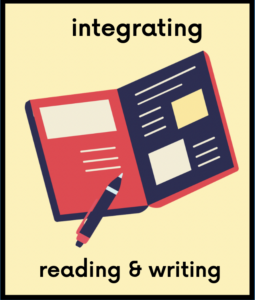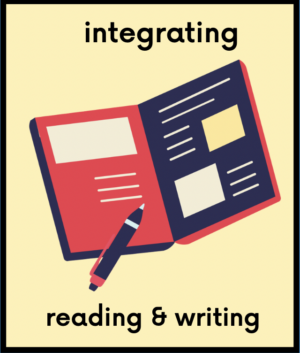
Learning Outcomes
This lesson:
- allows students to practice critical reading skills such as annotation
- introduces students to techniques for reading literary texts and analyzing literary devices including imagery and metaphor
- prepares students to write a short narrative essay
Materials:
Excerpt from Esmerelda Santiago’s When I was Puerto Rican: “Prologue: How To Eat a Guava”
Part I: Practice Critical Reading
Students are provided with handouts of the reading and the questions.
Begin by asking students:
What is active reading? How do active readers engage with a text?
Annotate:
Identify key parts of a text: genre, author information, purpose
Students can also underline words that are unknown, words that seem important and/or
are repeated in the text. Identify literary devices such as simile, metaphor, and imagery.
To practice identifying and analyzing these components of a text, we read and analyze
Santiago’s “Prologue: How to Eat a Guava.”
Step 1: The instructor and student volunteers read the piece out loud and students are asked to annotate the piece as it is being read.
Step 2: After the piece is read out loud, ask students to review the passage and annotations and answer the following questions on the handout or in their notebooks (10-15 minutes):
- What specific words does Santiago use to describe the guava? How does she use sensory imagery (sight, touch, taste, sound, and smell) to describe it? List these below:
Sight:
Touch:
Taste:
Sound:
Smell:
- How does Santiago use the guava as a metaphor for her life experience? Choose two quotes from the passage that show this. Write them below and explain them.
Discuss in pairs and/or as a large class group.
The following free-write question transitions students to the food memory assignment:
Free-write for 10 minutes about a food that relates to your childhood and/or one that you love.
Part II: Food Memory
Students write a short food memory based on a childhood memory and/or a food they love. This assignment usually occurs in the beginning of the semester and it allows students to draw on their own cultural and personal experiences to practice and improve their writing skills.
First, introduce the prompt:
Write (250 words) about a food that relates to your childhood or one that you love. Be sure to use specific and descriptive words like Esmeralda Santiago does in “How To Eat a Guava.”
Add a recipe and picture. You might need to do some primary research and interview a family member or friend who makes this food. If you use a recipe or picture from a website, you must cite it. The recipe is not included in the 250 word count.
Begin to brainstorm by answering the following questions:
- What does the food look like? Taste like (texture)? Feel like?
Smell like? Sound like when you cook it or bite into it?
- What place, person, and time period does it remind you of?
- Do you still eat it? Why or why not?
Second, review some examples. Examples from a food blog or published recipe in which the author shares a personal storied work well. The website of Caribbean food blogger Alica Senhouse, Alicaspepperpot.com, works well. She draws on her Caribbean heritage, experience of growing up in New York City, and family recipes to develop material for blog. Projecting one or both of the recommended recipes (Aunty Mala’s Macaroni Pie and Cheese Sandwiches) and briefly reviewing them with students, can help students visual what their food memory might look like. It also adds a real world component to the assignment.
Third, students write a draft of the food memory for the next class. If time permits, they might begin brainstorming and/or writing the essay in class.
Works Cited
Santiago, Esmeralda. “Prologue: How to Eat a Guava.” When I was Puerto Rican. Da Capo
Press, 1993, 3-4.
Senhouse, Alica. “Aunty Mala’s Macaroni Pie.” Alica’s Pepperpot, Nov. 2016,
www.alicaspepperpot.com/aunty-malas-macaroni-pie/.
—. “Cheese Paste And Egg Salad Sandwiches.” Alica’s Pepperpot, Aug. 2013.
Resources
“How To Eat a Guava”
238407


Leave a Reply